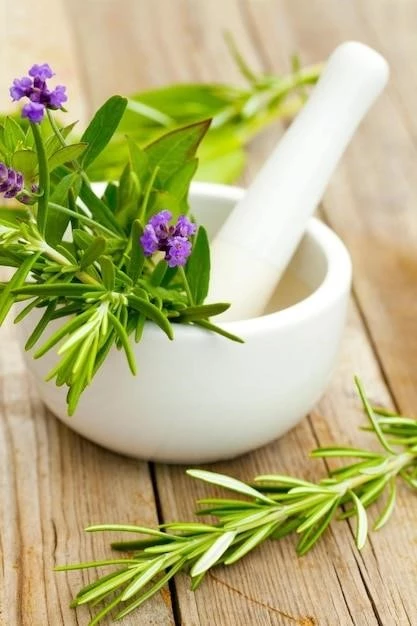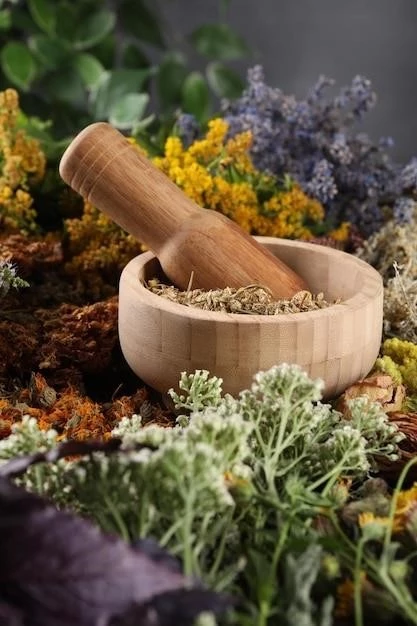Article Plan⁚ Palash Plant in Ayurvedic Medicine
Palash is used in Ayurveda to treat various health conditions such as skin diseases, diabetes, and respiratory disorders due to its antimicrobial, anti-inflammatory, and antioxidant properties.
Consumption of Palash may lead to allergic reactions in some individuals, gastrointestinal upset, and skin irritation. It is important to consult a healthcare professional before using Palash.
The Palash plant possesses medicinal properties including immunomodulatory, analgesic, and anti-fungal effects. These properties make it a valuable herb in Ayurvedic medicine.
Introduction to Palash Plant
The Palash plant, also known as Butea monosperma, is a species of flowering plant in the pea family. It is native to the Indian subcontinent and is highly valued in Ayurvedic medicine for its therapeutic properties. The plant’s bright orange to red flowers are a distinctive feature, and various parts of the plant, including the flowers, bark, and seeds, are used in traditional Ayurvedic formulations.
In Ayurveda, Palash is classified as ‘Tikta Rasa’ (bitter taste) and ‘Kashaya Guna’ (astringent quality) herb. It is believed to have cooling and detoxifying effects on the body, making it beneficial in balancing excess heat and toxins. Palash is rich in bioactive compounds like flavonoids, alkaloids, and tannins, which contribute to its medicinal properties.
Historically, Palash has been used to support overall health and well-being. Its versatility in addressing a wide range of health issues has made it a key component in numerous Ayurvedic preparations. The plant’s efficacy in promoting skin health, managing diabetes, and supporting respiratory function has been well-documented in Ayurvedic literature.
As scientific interest in traditional medicinal plants grows, the Palash plant continues to attract attention for its potential therapeutic applications beyond the scope of traditional medicine. Research into the plant’s chemical constituents and pharmacological effects has provided valuable insights into its mechanisms of action and potential benefits for modern healthcare practices.
Uses of Palash in Ayurvedic Medicine
Palash, a versatile herb in Ayurvedic medicine, is utilized for various therapeutic purposes. It is commonly employed in the management of skin diseases such as eczema, psoriasis, and acne due to its anti-inflammatory and anti-microbial properties. The plant’s astringent nature aids in wound healing and alleviating skin issues.
In Ayurveda, Palash is also valued for its impact on digestive health. It is used to aid in digestion, improve appetite, and alleviate gastrointestinal discomfort. The herb’s bitter taste stimulates digestive secretions, promoting better nutrient absorption and overall digestive well-being.

Furthermore, Palash is known for its role in managing diabetes. Its hypoglycemic properties help regulate blood sugar levels and enhance insulin sensitivity. Incorporating Palash into diabetic care regimens can assist in maintaining optimal glucose control and preventing complications associated with diabetes.
Respiratory conditions such as bronchitis, asthma, and cough are other areas where Palash is utilized. The plant’s expectorant and bronchodilator actions facilitate easier breathing and provide relief from respiratory symptoms. Additionally, Palash is used to address menstrual irregularities and support female reproductive health.
Overall, the diverse uses of Palash in Ayurvedic medicine demonstrate its significance as a natural remedy for a variety of health concerns. Its holistic approach to healing and broad range of applications make it a valuable addition to traditional healthcare practices.
Side Effects of Palash Consumption
While Palash offers numerous health benefits, its consumption may lead to certain side effects in some individuals. Allergic reactions such as skin rashes, itching, or swelling may occur, particularly in those with sensitivities to the plant. Gastrointestinal disturbances like nausea, vomiting, or diarrhea are possible side effects of Palash intake.
Excessive consumption of Palash can cause toxic effects due to its potent bioactive compounds. It is essential to follow recommended dosages and consult a healthcare provider before using Palash, especially if you have underlying health conditions or are pregnant or nursing. Individuals with known allergies or sensitivities should exercise caution.
Long-term use of Palash without proper guidance may lead to adverse effects on health. It is crucial to be aware of any unusual symptoms that may arise after consuming Palash and seek medical assistance if needed. Understanding the potential side effects of Palash consumption is vital to ensuring safe and effective utilization of this Ayurvedic herb.
Medicinal Properties of Palash Plant
The Palash plant boasts a plethora of medicinal properties that contribute to its therapeutic efficacy in Ayurvedic medicine. Its anti-inflammatory nature makes it valuable in alleviating inflammatory conditions such as arthritis and skin disorders. Palash’s antioxidant properties help combat oxidative stress and protect cells from damage.
Rich in bioactive compounds like flavonoids, alkaloids, and tannins, Palash exhibits significant antimicrobial activity, making it effective against various pathogens. Its analgesic properties provide relief from pain and discomfort, while its immunomodulatory effects help strengthen the body’s immune response.
Palash is known for its antidiabetic properties, aiding in the management of diabetes by regulating blood sugar levels. Its astringent quality promotes wound healing and skin health, making it a popular ingredient in skincare formulations. Additionally, the plant’s anti-fungal properties make it a valuable resource in addressing fungal infections.
Furthermore, Palash’s cooling and detoxifying effects on the body support its use in detoxification therapies and cleansing regimens. Its adaptogenic properties help the body adapt to stress and maintain balance. The multifaceted medicinal properties of the Palash plant underscore its significance as a cornerstone of Ayurvedic medicine.
Palashpushpasava⁚ Benefits and Indications
Palashpushpasava, a formulation derived from Palash flowers, holds significant therapeutic value in Ayurvedic medicine. Known for its cooling and calming properties, Palashpushpasava is traditionally used to pacify Pitta dosha and balance excess heat in the body.
One of the primary benefits of Palashpushpasava is its ability to support digestive health. It aids in improving digestion, alleviating acidity, and promoting liver function. The formulation is also recognized for its detoxifying effect on the liver and enhancing overall digestive well-being.
In Ayurveda, Palashpushpasava is recommended for individuals experiencing inflammatory conditions such as skin irritations, burning sensations, or indigestion. Its anti-inflammatory properties help reduce inflammation and provide relief from discomfort associated with Pitta imbalance.
Palashpushpasava is commonly used to address menstrual irregularities and hormonal imbalances in women. It helps regulate menstrual flow, ease menstrual cramps, and support reproductive health. The formulation’s soothing nature also aids in managing stress and promoting emotional well-being.
By leveraging the therapeutic benefits of Palash flowers, Palashpushpasava serves as a natural remedy for various health concerns. Its holistic approach to healing and gentle effects make it a valuable addition to Ayurvedic practices, supporting overall health and vitality.
Palash Dosage Recommendations
When using Palash in Ayurvedic treatments, it is crucial to adhere to recommended dosage guidelines to ensure both safety and efficacy. The dosage of Palash may vary depending on the form of the herb being used, such as powder, decoction, or extract.
For Palash powder, a typical dosage ranges from 1-3 grams per day, usually divided into multiple doses for optimal absorption. Palash decoctions are often prepared by boiling the herb in water and consumed in quantities of 50-100 ml, one to two times a day.
If utilizing Palash extract or tincture, dosages may differ based on the concentration and preparation method. It is advisable to consult with a qualified Ayurvedic practitioner to determine the appropriate dosage for individual health needs and conditions.
It is essential to consider factors such as age, health status, and ongoing treatments when determining the suitable Palash dosage. Exceeding recommended dosages can lead to adverse effects, underscoring the importance of precise dosage calculations and expert guidance in utilizing Palash effectively for therapeutic purposes.
By following proper dosage recommendations and seeking professional advice, individuals can harness the benefits of Palash while minimizing the risk of adverse reactions, ensuring a safe and beneficial experience with this valuable herb in Ayurvedic medicine.
Traditional Uses of Palash Seeds
The seeds of the Palash plant have been revered in traditional Ayurvedic practices for their therapeutic properties and diverse applications. Palash seeds are commonly used in formulations to address a wide range of health issues and promote overall well-being.
One traditional use of Palash seeds is in skincare preparations. The seeds are often ground into a fine powder and incorporated into face packs or ointments to help treat skin conditions like acne, eczema, and dermatitis. The seeds’ anti-inflammatory and anti-microbial properties make them beneficial for promoting healthy skin.
In Ayurvedic formulations, Palash seeds are also utilized to support digestive health. They are known to aid in digestion, alleviate indigestion, and regulate bowel movements. Palash seed powder may be consumed with warm water or incorporated into herbal remedies targeting digestive issues.
Additionally, Palash seeds are valued for their anthelmintic properties, which help expel parasitic worms from the body. Traditional Ayurvedic texts recommend Palash seed preparations for deworming treatments and addressing intestinal parasites effectively.
Given their versatility and therapeutic benefits, Palash seeds continue to be a prominent ingredient in Ayurvedic formulations aimed at enhancing skin health, digestive function, and overall wellness. The extensive traditional uses of Palash seeds underscore their significance in Ayurvedic medicine as a potent natural remedy.
Conclusion
In conclusion, the Palash plant holds a significant position in Ayurvedic medicine due to its versatile uses and profound therapeutic properties. From addressing skin diseases to managing diabetes and supporting digestive health, Palash proves to be a valuable herb with diverse applications.
While the medicinal properties of Palash, including anti-inflammatory, antioxidant, and antimicrobial effects, make it a potent ingredient in Ayurvedic formulations, caution must be exercised regarding potential side effects. It is essential to be aware of the proper dosage recommendations and consult with a healthcare provider before using Palash, especially in case of allergies or pre-existing conditions.
Palashpushpasava emerges as a noteworthy formulation derived from Palash flowers, offering benefits in digestive health, skin conditions, and menstrual irregularities. Following recommended dosages is crucial to harness the full potential of Palashpushpasava and other Palash-based remedies.
Traditional uses of Palash seeds further showcase the herb’s efficacy in skincare, digestive support, and deworming treatments. The holistic approach of Ayurvedic medicine leverages the diverse properties of Palash to promote overall well-being and address various health concerns effectively.
Incorporating Palash into Ayurvedic practices requires a nuanced understanding of its uses, dosage, and potential effects, emphasizing the importance of expert guidance and adherence to established guidelines. The rich heritage and therapeutic benefits of Palash underscore its enduring relevance in the realm of traditional medicine.
